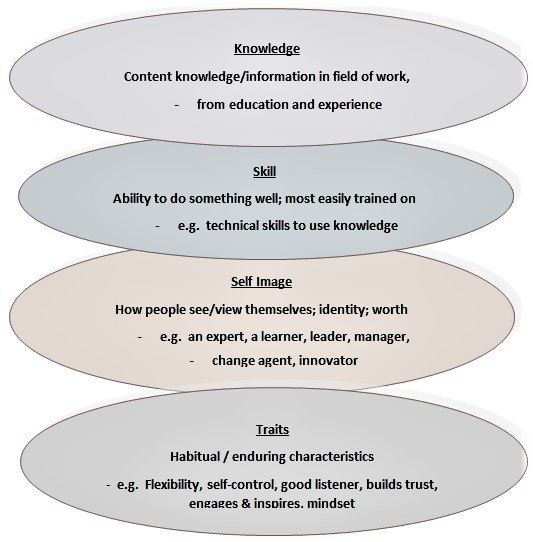Iceberg Model of Competency
20/12/2021 1 By indiafreenotesThe iceberg model for competencies takes the help of an iceberg to explain the concept of competency. An iceberg which has just one-ninth of its volume above water and the rest remains beneath the surface in the sea. Similarly, a competency has some components which are visible like knowledge and skills but other behavioural components like attitude, traits, thinking styles, self-image, organizational fit etc are hidden or beneath the surface.
Ice-Berg Model
The pictorial representation of the model is as below:

The iceberg model contains six competencies: skill, knowledge, social role, self-image, traits and motives. Skill and knowledge are located on the portion of the iceberg that sits above the water level, which is easily seen. They, are around 20 % of a person’s competencies. So, they are relatively easy to determine. Social role, self-image, traits and motives are positioned on the iceberg below the water level hidden from the human eye. These account for around 80 percent of a person’s competencies, but they’re much more difficult to assess than skill and knowledge.
- Skills = A learned ability
- Knowledge = Acquiring information in a particular field
- Self-Image = Attitudes and values
- Traits = Why and how we behave a certain way
- Motives = What drives us, i.e., the need to seek achievement, power/influence, affiliation. etc..

es and traits become more important than the skills and knowledge required to do the job. Think of a soldier at the war front, he knows how to use the weapon he is holding, but thinks that the war is unjust and refuses to fire. In organizations, senior level hiring is therefore a time consuming and elaborate affair as it becomes necessary to establish the alignment between the organizational and individual motivation and aspirations.
Developing the two levels of competencies also takes different routes. The visible competencies like knowledge and skills can be easily developed through training and skill building exercises however the behavioural competencies are rather difficult to assess and develop. It takes more time and effort intensive exercises, like psychotherapy, Counselling, coaching and mentoring, developmental experiences etc.
In the traditional method of hiring, most of the organizations looked at just the visible components of competencies; the knowledge and skills, believing that the behavioural aspects can be developed through proper guidance and good management. However, with major shifts in the conventional methods of people management, the hiring process has also undergone a change therefore a lot of emphasis is being put on the hidden behavioural aspects as well to make a sound decision. Hence, a complete picture regarding the competence of a person consists of both visible and hidden aspects and it becomes necessary to understand both to arrive at identifying the best man for a job.
Share this:
- Click to share on Twitter (Opens in new window)
- Click to share on Facebook (Opens in new window)
- Click to share on WhatsApp (Opens in new window)
- Click to share on Telegram (Opens in new window)
- Click to email a link to a friend (Opens in new window)
- Click to share on LinkedIn (Opens in new window)
- Click to share on Reddit (Opens in new window)
- Click to share on Pocket (Opens in new window)
- Click to share on Pinterest (Opens in new window)
- More
[…] VIEW […]